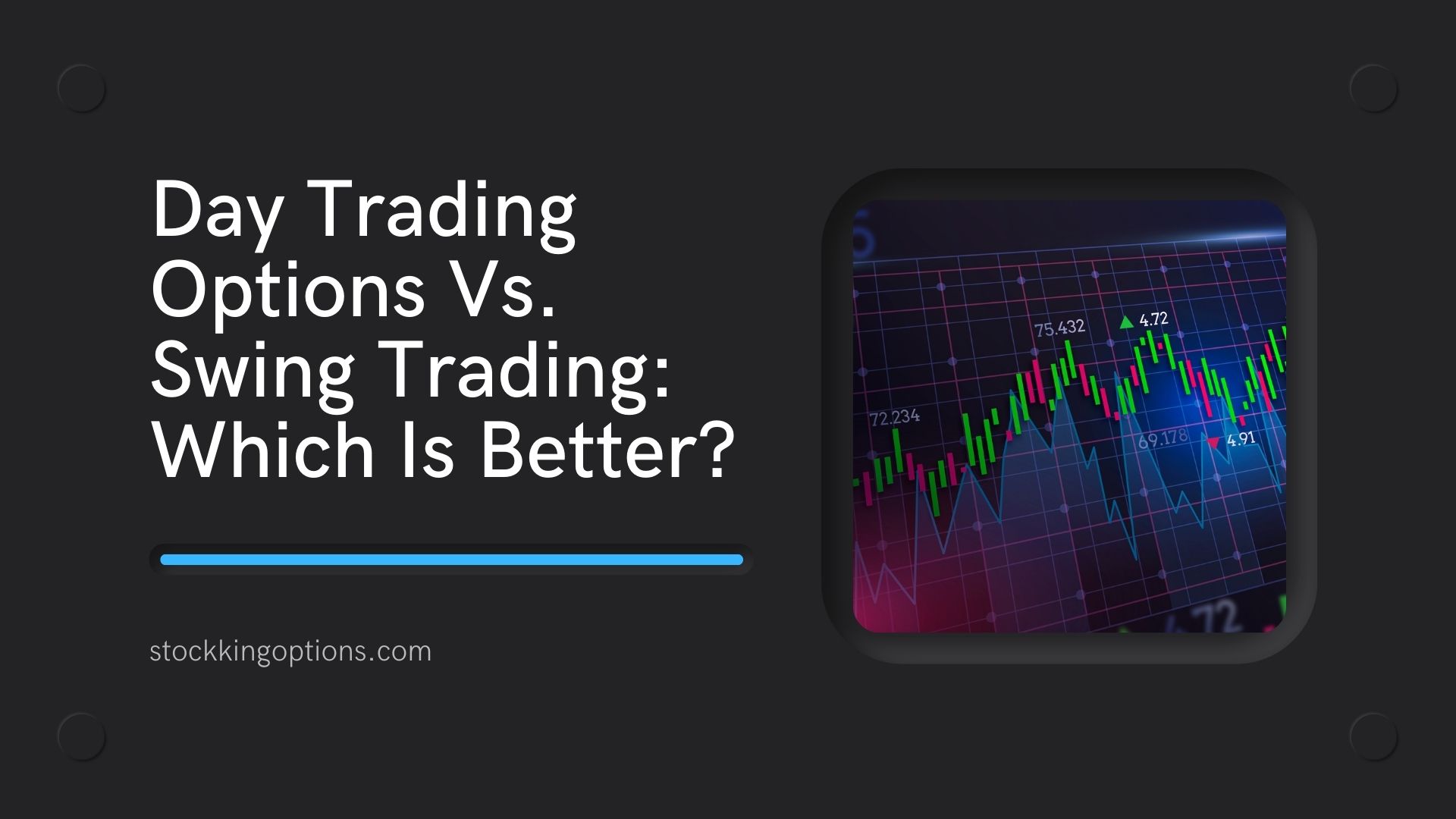
Key Takeaway: Day trading options and swing trading stock options offer distinct approaches to the market. Consider factors like time commitment, risk tolerance, and trading style to determine which suits you best.
Curious about day trading options vs. swing trading? Each has pros and cons. Day trading offers rapid trades, while swing trading provides flexibility. Your choice depends on factors like time commitment and risk tolerance.
Comparison Of Day Trading And Swing Trading
When it comes to trading in the stock market, there are several strategies that traders use to make profits. Two popular methods include day trading and swing trading. While both involve buying and selling stocks within a short time frame, there are significant differences between the two approaches.
Day trading is a strategy where traders buy and sell securities within the same day, with the goal of making a profit from small price movements. This type of trading requires constant monitoring of the market and quick decision-making skills. Day traders often use technical analysis tools like charts and indicators to identify profitable entry and exit points.
On the other hand, swing trading involves holding positions for longer periods, typically between a few days to weeks. Traders using this method focus on capturing larger price movements by analyzing fundamental factors such as company news, earnings reports, and economic data. Swing traders may also utilize technical analysis but tend to rely more on long-term trends rather than short-term fluctuations.
One major difference between day trading and swing trading is their respective risk levels. Since day traders open and close positions within a single day, their exposure to overnight market changes is minimal compared to swing traders who hold positions for longer periods. However, this also means that day traders need to make quick decisions under pressure and can be susceptible to emotional biases such as fear or greed.
In contrast, swing traders have more time to analyze market trends and make informed decisions based on fundamental analysis. This approach requires patience as well as risk management skills since positions are held for longer durations which could result in greater losses if not managed properly.
Another factor that distinguishes these two strategies is their target profit margins. Day traders aim for smaller profits per trade but execute multiple trades throughout the day whereas swing traders look for bigger returns by holding onto positions for extended periods.
Both day trading and swing trading have their own pros and cons depending on an individual’s risk tolerance level, available time commitment, and personal trading style. Some traders may prefer the fast-paced nature of day trading, while others may feel more comfortable with the longer-term approach of swing trading.
The choice between day trading and swing trading ultimately depends on an individual’s goals, preferences, and risk appetite. It is essential to thoroughly understand both strategies before deciding which one suits your needs and aligns with your financial goals.
Pros And Cons Of Each Approach
When it comes to trading in the stock market, there are two main approaches that traders can take – day trading options and swing trading. Both of these methods have their own unique advantages and disadvantages, and it is important for traders to understand them before deciding which approach is best suited for their individual goals and risk tolerance.
Pros of Day Trading Options:
1. High Potential for Quick Profits: Day trading options involves buying and selling options contracts within a single trading day. This fast-paced approach allows traders to potentially make profits quickly if they are able to accurately predict short-term price movements.
2. Lower Capital Requirement: Compared to other forms of trading, day trading options require less capital as traders only need enough funds to cover the cost of the option premium instead of purchasing the underlying asset.
3. Flexibility: Day trading options offers flexibility as traders can enter and exit positions multiple times throughout the day, taking advantage of small price changes in the market.
4. Reduced Risk Exposure: Since positions are closed at the end of each day, day traders do not carry overnight risk exposure which can be beneficial in volatile markets where prices can fluctuate dramatically outside of regular market hours.
Cons of Day Trading Options:
1. High Risk: The fast pace nature of day trading options also means higher risk. Traders must be able to make quick decisions under pressure and any miscalculations or market fluctuations can result in significant losses.
2. Requires Constant Monitoring: In order to be successful in day trading options, one must constantly monitor market movements throughout the entire duration of a single session which requires a lot of time and dedication.
3. Limited Profit Potential: Due to short-term trades, potential profits may be limited compared to longer term strategies like swing trading where trades can last from days to weeks or even months.
Pros of Swing Trading:
1. More Time Freedom: Unlike day trading which requires constant monitoring, swing traders only need to check on their positions a few times a day. This allows for more time freedom and flexibility in terms of lifestyle.
2. Potential for Larger Profits: Since swing traders hold their positions for longer periods of time, they have the potential to capture larger price movements and thus make bigger profits.
3. Lower Risk: With longer holding periods, swing trading carries less risk compared to day trading as there is more time for market fluctuations to even out.
Cons of Swing Trading:
1. Higher Capital Requirement: Swing trading typically requires a higher capital investment as traders need to purchase the underlying asset instead of just paying an option premium.
2. Overnight Risk Exposure: Unlike day traders who close their positions at the end of each day, swing traders carry overnight risk exposure which can result in significant losses if unexpected events occur while markets are closed.
3. Limited Flexibility: Traders must commit to their positions for a longer period of time, limiting their ability to take advantage of short-term market movements.
Ultimately, the decision between day trading options or swing trading depends on individual preferences and goals. Day
Choosing The Right Trading Style For Your Goals
When it comes to trading, there is no one-size-fits-all approach. Each individual has different goals and risk tolerance levels, which ultimately determine the best trading style for them. In this section, we will discuss the key factors to consider when choosing a trading style that aligns with your goals.
1. Time Commitment:
The first factor to consider when choosing a trading style is how much time you are willing and able to commit to monitoring and executing trades. Day trading options requires constant attention throughout the day, as traders aim to capitalize on short-term price movements. On the other hand, swing trading involves holding positions for several days or even weeks, allowing for more flexibility in terms of time commitment.
2. Risk Tolerance:
Another crucial aspect to consider is your risk tolerance level. Day trading options can be high-risk due to its fast-paced nature and potential for large gains or losses within a short period of time. Swing trading tends to have lower volatility and therefore may be better suited for those with a lower risk appetite.
3. Trading Capital:
The amount of capital you have available also plays a significant role in determining your ideal trading style. Day trading options often requires larger amounts of capital due to frequent trades and higher margin requirements. Swing trading generally requires less capital as positions are held longer term.
4. Personality:
Your personality also plays an important role in selecting a suitable trading style. If you thrive under pressure and enjoy making quick decisions, day trading options may be a good fit for you. However, if you prefer taking a more measured approach and analyzing market trends over longer periods, swing trading may be a better choice.
5.Trading Goals:
It is essential to have clear goals in mind when selecting a trading style that aligns with them effectively. If your goal is generating consistent daily income through active management of trades, then day trade options would be more suitable for you than swing trade which focuses on long-term gains.
There is no right or wrong answer when it comes to choosing a trading style. It ultimately depends on your individual goals, risk tolerance, and personality. It is important to carefully consider these factors before deciding on a trading style as it can greatly impact your success in the markets. Remember to always stay informed and continuously adapt your strategy as market conditions change.




